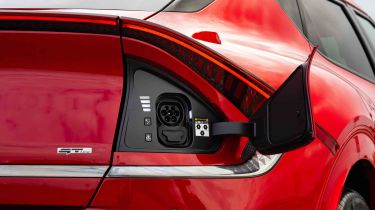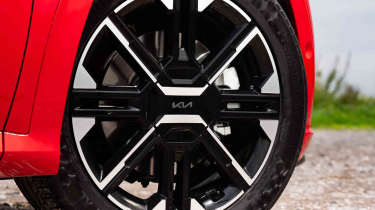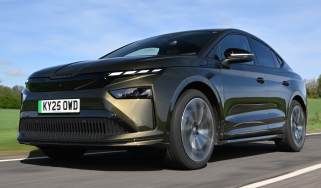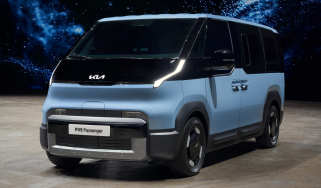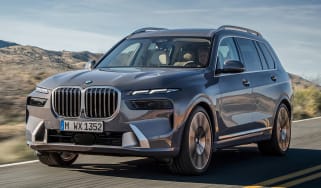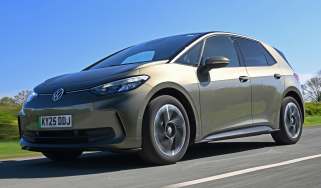Kia EV6 - Range, charging and running costs
Family buyers who are looking for lower running costs will be impressed by the EV6’s range and overall efficiency

| Model | Battery size | Range | Insurance group |
| EV6 Air RWD | 84kWh | 361 miles | N/A |
| EV6 GT-Line AWD | 84kWh | 324 miles | N/A |
| EV6 GT AWD | 77.4kWh (74kWh useable) | 263 | 45A |
Electric range, battery life and charge time
Bar the high-performance GT, all versions of the Kia EV6 use an 84kWh capacity battery pack, with the RWD single-motor versions offering the longest range in the line-up – up to 361 miles from a single charge. The AWD system in dual-motor models cuts the maximum range to 339 miles in GT-Line variants (324 miles for the GT-Line S version). The four-wheel-drive, 577bhp Kia EV6 GT is powered by the same 77.4kWh battery as the outgoing model, and offers a maximum range of 263 miles.
Buyers can add a heat pump to the EV6 to help reduce the negative effects of cold weather in winter on battery range. At temperatures reaching minus 7 degrees centigrade, Kia states that it should be able to preserve the range to around 80 per cent of what’s possible at 25 degrees by scavenging heat from the coolant system to warm the interior. While it isn’t unusual in this class to offer such an energy saving device as an option, it is a shame that the EV6 only reserves this for the top-spec GT-Line S trim. Rivals offer it throughout their respective ranges.
During testing in slightly cooler 10-15 degree weather and with a higher mix of motorway driving, we saw efficiency of 3.3 miles per kWh from a four-wheel-drive, GT-Line S version with an optional heat pump. That’s a little shy of the 3.5 miles per kWh that Kia claims it’ll achieve, but this figure should improve on a journey with more opportunities to utilise regenerative braking. The lighter rear-wheel-drive Air and GT-Line models have a better efficiency rating of 3.9 miles per kWh, and in our testing of the previous EV6, these have been the most efficient versions in the range.
Used - available now
Unfortunately, rivals have quickly been playing catch-up to the EV6 both in terms of overall range and efficiency. The 85 version of the Skoda Enyaq is on par with the EV6 for range, while the Long Range Single Motor Polestar 2 is significantly better, and manages over 400 miles to a charge, averaging 4.2 miles per kWh.
However, few can match the speedy rapid charge times of the EV6. Like its Hyundai Ioniq 5 and Genesis GV60 siblings, the EV6 uses an 800V charging system, so if you can plug into a 350kW ultra-rapid charger, a 10 to 80 per cent top-up takes just 18 minutes. When utilising a 7.4kW home wallbox, it’ll take just under 13 hours to fully replenish the 84kWh battery in the EV6.
Tax
Until 2025, all electric cars, regardless of list price, are exempt from road tax (VED) in the UK and the London Congestion Charge, which could save EV6 drivers a considerable sum. Company-car drivers will also enjoy the 2 per cent Benefit-in-Kind (BiK) rate (until 2025) that the EV6 currently attracts.
Insurance
Insurance group ratings for the revised EV6 haven’t been released yet, but given that it is no more powerful than its predecessor, we doubt there will be much movement from the existing ones. These start in group 34 for the rear-wheel-drive version, and go up to 40 for the four-wheel-drive version.
Depreciation
The EV6 is predicted to hold on to around 47 to 48 per cent of its list price over a typical three-year/36,000-mile ownership period. This is, on average, a little better than the Hyundai Ioniq 5, which ranges from 43 to 48 per cent over the same period. On the other hand, the Renault Scenic holds on to its value slightly better, maintaining between 53 to 54 per cent over the same three-year stretch.
To get an accurate valuation for a specific model, check out our free car valuation tool
